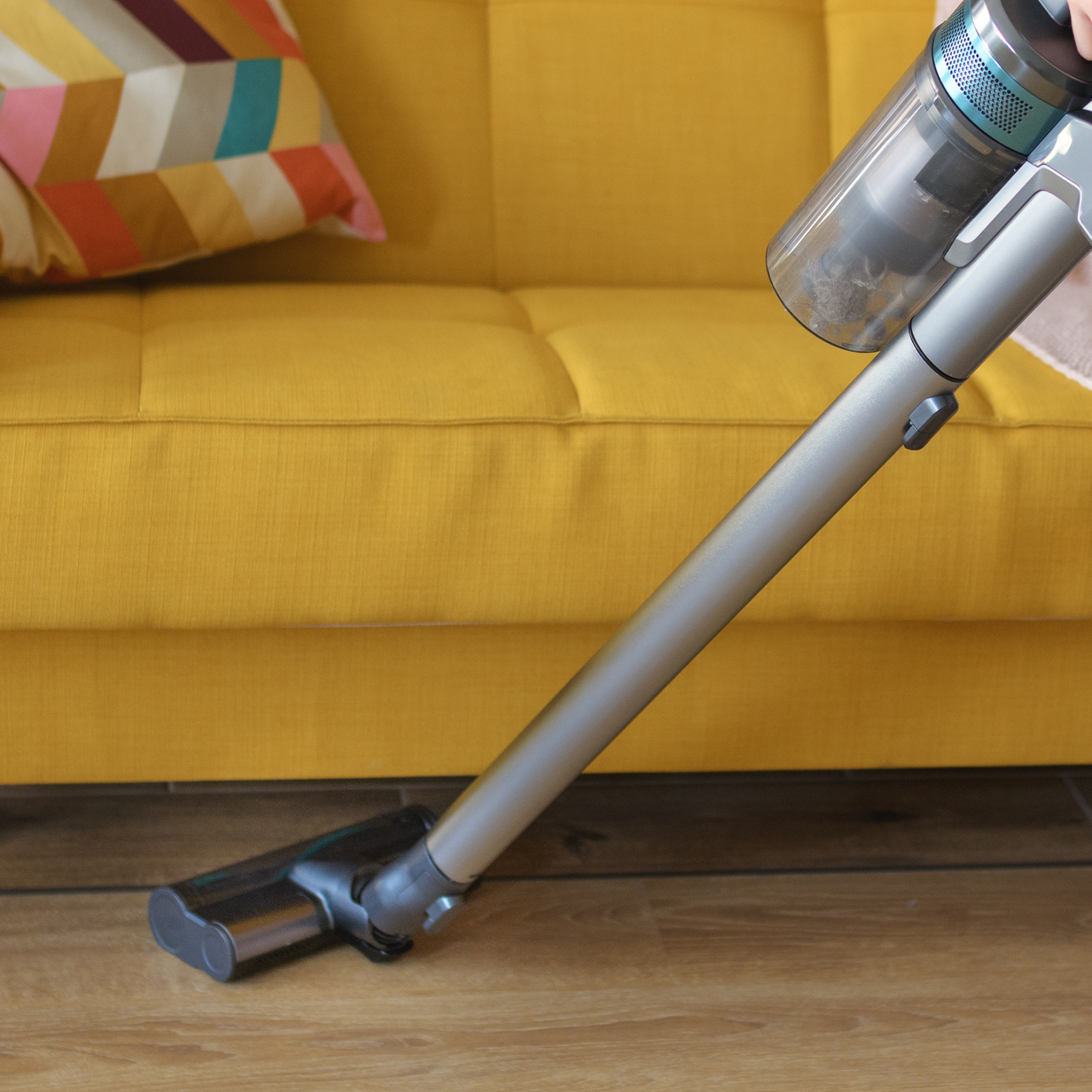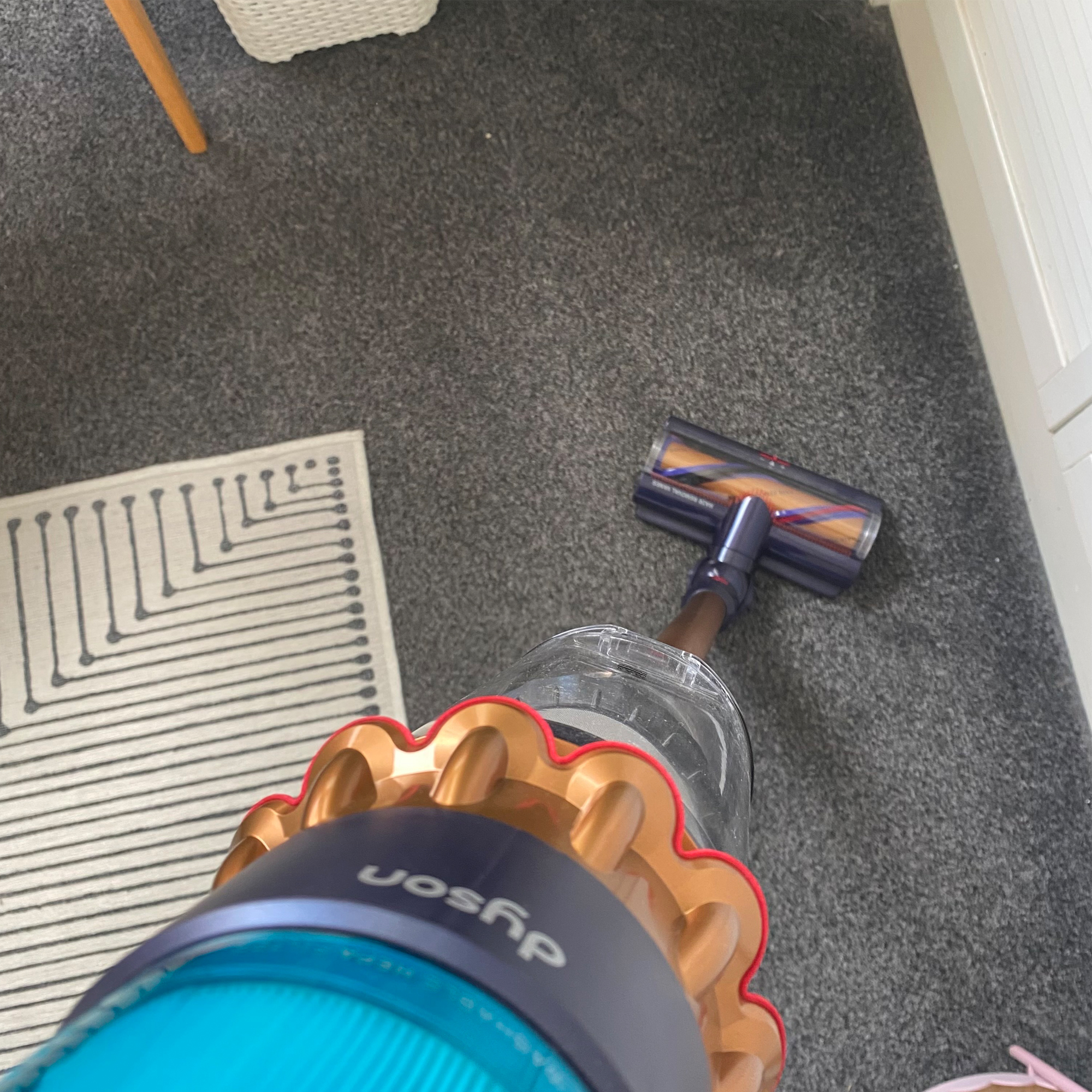
Vacuum cleaners come in so many different shapes and sizes, and with different power capabilities. But as there's nothing more frustrating than a vacuum with poor suction (at least when it comes to your cleaning tasks), understanding how to tell how much suction a vacuum cleaner has can come in handy.
Whether you’re looking to buy one of the best vacuum cleaners or your current vacuum has lost suction, these measurements can help you shop wisely. By knowing your air watts from your water lift, you can compare models, choose the right vacuum cleaner for your needs, and ensure that your machine runs as smoothly as possible for years to come.
As Isabella Forgione, vacuum cleaner expert at AO.com, explains, ‘Your vacuum’s suction power is the key factor to determine how your appliance is performing, and how efficiently it will pick up dust, dirt and pet hair.’ So, follow this guide to find out how much suction your vacuum cleaner has - and why this matters.

How is vacuum cleaner suction measured?
To determine how much suction a vacuum cleaner has, you first need to understand how vacuum cleaner suction is measured. And while there are countless ways to do this, two measurements in particular are the most important: air watts (AW) and water lift.
The air wattage is different from the electrical power wattage (which you can use to calculate how much it costs to run a vacuum cleaner). Air watts refer to the strength and speed of the airflow created by the appliance's motor. The faster the airflow, the stronger the suction, and the more efficient the vacuum cleaner.
You should expect most vacuum cleaners to offer between 100-300AW in the UK and the rest of Europe. And with this level of suction power, most will be able to pick up dirt and debris in just one single pass.
Amazingly, modern inventions mean that air watts aren’t necessarily a one-size-fits-all measurement for a single vacuum. The team at PHC Vacuum Service explain this impressive feat of engineering further, saying: ‘Newer models of cordless vacuum cleaners tend to have varying power modes, which increase or decrease the power (Airwatts) of the machine depending on the surface type being cleaned. On some premium models, such as the new Dyson Gen5, this adjustment is done automatically, with the AW increasing when a different floor type is detected.’

So, if you're having problems with an old vacuum and are considering upgrading, it's well worth upgrading to one that offers this auto-adjustment. This way, you can ensure your vacuum is cleaning each surface as efficiently as possible.
The water lift of a vacuum cleaner is similar but focuses on the sealed suction of the appliance. This essentially measures how far water would be sucked up the vacuum tube before gravity would ultimately take over and cancel out the suction power. This is a good indicator of how a vacuum’s suction would be able to handle deeper-piled carpets, a clogged vacuum hose, or a dirty filter that needs cleaning.
So, you should always aim to buy a vacuum with a higher waterlift rating, as this means that it will continue to clean your home at a higher level even if the vacuum itself needs some TLC.
Some manufacturers don’t disclose the water lift rating as most people tend to focus on the AW of a vacuum cleaner - but if they do, water lift is often outlined in mm.
Where to find vacuum suction measurements
Now you know what measurements you’re looking for, it’s also a good idea to know where to look to understand how much suction your vacuum cleaner has. And there are a few places to look for this.
1. Check online
You can find anything online if you try hard enough, but you’ll be happy to know that finding out how much suction a vacuum cleaner has is incredibly easy. A simple internet search of your chosen model should take you to either the manufacturer or a retailer’s website, and you should find the information within the ‘technical specification’ section.
However, if you’re buying through a third-party website and can’t find the information you want, it’s always a good idea to go back to the manufacturer’s website, as they typically have the most detailed (and up-to-date) information.
You never know; you might even come across one of the best cleaner vacuum deals in the process.
2. Inspect the instruction manual
Unless you buy second-hand, every single vacuum cleaner will come with an instruction manual. As well as outlining everything you need to do to put together the vacuum and get it started, it should also provide you with the product's technical specs. Here, it will have information on the air wattage.
If you haven’t bought the vacuum yet, you’ll find that most manufacturers will also provide a virtual manual on the website.

3. Contact the manufacturer
If you can’t quite find the information you’re looking for online or in the instruction manual, there’s no harm in contacting the manufacturer of your vacuum. They will have all of the information you could want or need regarding how much suction a vacuum cleaner has and should be able to answer any other questions you may have.
So, give them an email or a phone call, depending on how they prefer to be contacted.
4. Use a suction gauge
If you’re concerned that your vacuum has lost suction and requires a repair or needs replacing, Isabella says, ‘A quick test you can perform is by placing your hand over your vacuum’s nozzle. A strong vacuum will create an instant seal, and this can feel difficult to pull your hand away, whereas a weak suction may indicate your vacuum has a problem.’
But if this isn’t enough for you, you could invest in a dedicated vacuum cleaner suction gauge, which allows you to measure precisely how much suction your vacuum cleaner has. These can be fairly pricey, so it’s down to you to determine whether it’s worth it or not.
Crowned the 'best overall' vacuum in our guide, this model's suction power is second to none. This impressive suction, coupled with a hefty 70-minute run-time, makes it one of the best cordless offerings on the market.
It may seem pricey, but this vacuum cleaner suction gauge could save you having to replace your whole vacuum cleaner. So, it may be a worthy investment if you believe you have a clog.
Following in the footsteps of Dyson, this vacuum also uses detection technology to adjust suction power for each surface automatically. This means that your suction will always be top-notch.
FAQs
Does higher wattage mean more suction in a vacuum?
Yes and no. Although a higher wattage typically leads to higher suction power, it’s important to note that electrical wattage is different to air wattage. They are two different measurements and you should research both when buying a new vacuum cleaner.
So, if you want to buy a vacuum with impressive suction power, try to find one that has a high electrical wattage and high air watts.
Why does my Dyson have poor suction?
As Dyson is known for offering high suction power, there’s a very high chance that other factors have resulted in poor suction. So, look out for:
- Clogged hoses and nozzles
- Dirty filters
- Overloaded dust bin
- Outdated or broken parts
- General wear and tear
You might have never considered paying much attention to your vacuum's suction power before, but it could be key to choosing the best machine for your home.







